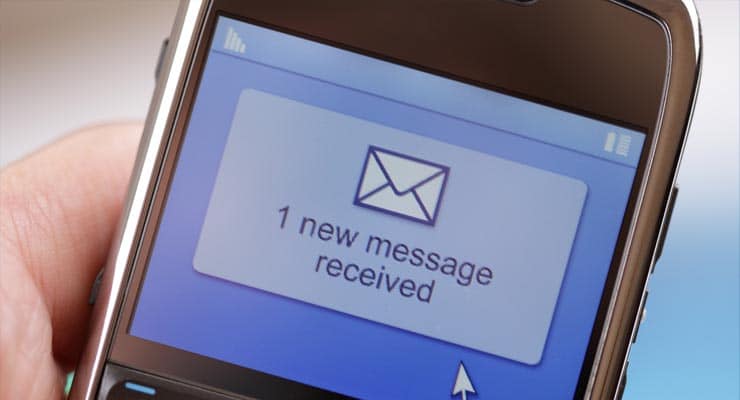I got a suspicious text or email from a bank I don’t use. Why?
If you’re a regular user of text or email, and you probably are, you’ve most likely at some point received a text or email from a bank that you don’t have an account with.
Most likely the message asked you to click a link or open up at attachment. But why is a bank you’re not a customer with messaging you? Or why is someone pretending to be from a bank you’re not a customer with?
First, it’s almost certainly not a bank messaging or emailing you. It’s a scam. As such, clicking the link or opening the attachment is most definitely not recommended. The best course of action is to simply delete it.
So why are scammers pretending to be from a bank you don’t bank with?
The answer is because the scammer doesn’t know who you bank with, so they’re basically hedging their bets.
The text or email you received didn’t just go to you. It went to thousands of other people as well. Maybe tens of thousands. Maybe even hundreds of thousands. With every other message also quoting the same bank.
Sponsored Content. Continued below...
Scammers do this because they know, statistically, a certain percentage of recipients will be a customer of that particular bank. And those recipients are more likely to fall for the scam because, after all, how would a scammer know who they banked with? The answer, of course, is that they didn’t.
In marketing, it’s called a scattergun approach. A campaign – in this case a phishing campaign – that is not sent to targeted individuals, rather just mass mailed to anyone. For these scammers, a recipient of their messages actually being a customer of the bank they use in the message is mere coincidence. But because of the size of these phishing campaigns, such coincidences are inevitable.
Eventually the scammers will simply change the name of the bank and send out their scam messages en masse once again. Only this time it’ll be a different portion of recipients that will now sit up and take notice as they see their own bank mentioned in the scam message.
The advantages to this approach is that it’s cheap and quick and there’s a large pool of potential victims at their disposal. The disadvantages is that the success rate is low because of the lack of targeting.
Sponsored Content. Continued below...
The opposite to this scattergun, mass-mailing approach is targeted scams, otherwise known as spear-phishing. This is when scammers take the time to find out more about a victim, such as their name, name of their bank, date of birth and more. The advantages of this is a far higher success rate since the scams are more convincing. The disadvantages are that it is slower, more expensive and with fewer potential recipients (since such targeted scams cannot be mass-mailed.)
So if you ever get a text or email from someone else’s bank, simply hit the delete button.
Keep up-to-date with all our latest articles. Follow us on Facebook, Instagram and Twitter.
Continued below...
Thanks for reading! But before you go… as part of our latest series of articles on how to earn a little extra cash using the Internet (without getting scammed) we have been looking into how you can earn gift vouchers (like Amazon vouchers) using reward-per-action websites such as SwagBucks. If you are interested we even have our own sign-up code to get you started. Want to learn more? We discuss it here. (Or you can just sign-up here and use code Nonsense70SB when registering.)
Become a Facebook Supporter. For 0.99p (~$1.30) a month you can become a Facebook fan, meaning you get an optional Supporter Badge when you comment on our Facebook posts, as well as discounts on our merchandise. You can subscribe here (cancel anytime.)
